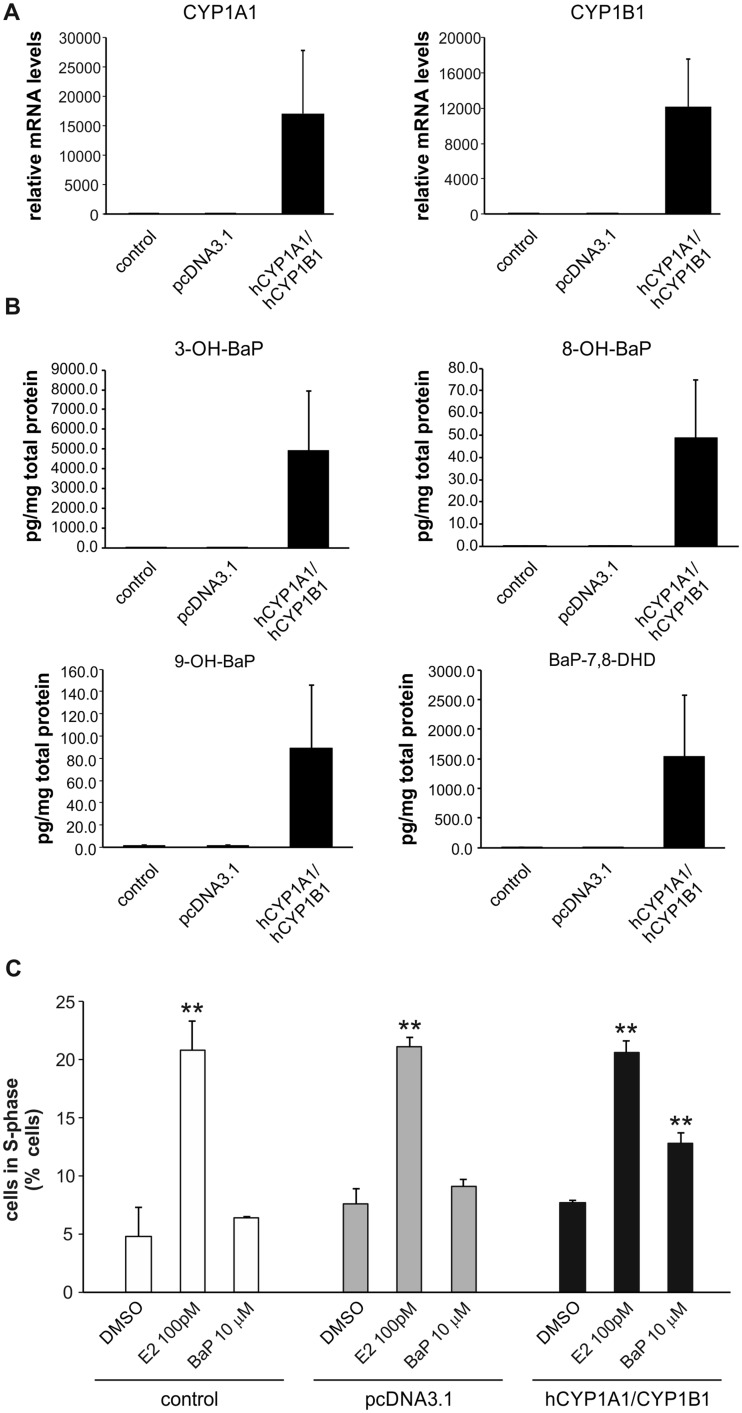Figure 6.
Transient transfection with human CYP1A1 and CYP1B1 enzymes restores both BaP metabolism and BaP-induced effects on cell cycle progression in MCF-7 AhRKO cells. A, MCF-7 AhRKO cells transiently transfected with empty vector (pcDNA3.1) or equal amount of hCYP1A1 and hCYP1B1 expression vectors and then cultivated for 24 h. Cells were then lysed and total RNA was isolated. CYP1A1/1B1 mRNA levels were determined using qRT-PCR as described in Materials and Methods. The results represent means ± SD of three independent experiments. B, MCF-7 AhRKO cells transiently transfected with empty vector (pcDNA3.1) or equal amount of hCYP1A1 and hCYP1B1 expression vectors and then cultivated for 24 h. Cells were then exposed to BaP (10 μM) and collected after 24 h. BaP metabolites were extracted from cell pellets and analyzed by LC-MS/MS as described in Materials and Methods. Protein levels were estimated in parallel with metabolite detection, in order to allow normalization of results. The data represent means ± SD of three independent experiments. C, MCF-7 AhRKO cells transiently transfected with empty vector (pcDNA3.1) or equal amount of hCYP1A1 and hCYP1B1 expression vectors and then cultivated for 24 h in experimental medium. Cells were then exposed to DMSO (0.1%; negative control), E2 (100 pM; positive control), or BaP (10 μM) for 24 h. Percentage of cells in S-phase was determined using flow cytometry as described in Materials and Methods. The results represent means ± SD of three independent experiments. Symbol “**” denotes significant difference (p < .01), as compared with the respective group of DMSO-treated cells.

